Pilots in air crash relied on automatic equipment
Updated: 2013-07-10 12:19
(Agencies)
|
||||||||
SAN FRANCISCO - The pilots aboard the Asiana Airlines Boeing 777 that crashed in San Francisco relied on automatic equipment - an auto-throttle system - to maintain airspeed and did not realize the plane was flying too slowly until it was just 200 feet (60 meters) above the ground, the head of the US National Transportation Safety Board said on Tuesday.
In her third detailed briefing on Saturday's crash that killed two Chinese passengers and injured more than 180 other people, NTSB Chairwoman Deborah Hersman also said two flight attendants were ejected from the plane after its tail hit a seawall in front of the runway and was torn off. Both were found injured but alive on the side of the runway.
Hersman said many questions remained about the incident. The South Korean airline's flight crew members were not tested for drugs or alcohol after the crash, a requirement for pilots of US-based carriers involved in accidents, she said.
The accounts given to investigators by the pilots, as relayed by Hersman, confirmed information from the plane's flight data recorder that showed the plane was traveling 25 percent below its target airspeed as it came in for landing.
While she has declined to speculate on the cause of the crash, much of the information released by the NTSB suggests pilot error as a main focus of the investigation.
The pilot in charge of landing the plane on Saturday was in training on the 777 and was roughly halfway through the process, while seated next to him was a co-pilot on his first flight as an instructor. Both were experienced pilots, although they had not flown together before, Hersman said.
"At about 500 feet, he realized that they were low," Hersman told reporters, referring to the instructor pilot's account of the failed last-second attempts to avoid Saturday's disaster. "Between 500 and 200 feet (150 and 60 meters), they had a lateral deviation and they were low. They were trying to correct at that point."
Referring to the instructor pilot, she said it was not until 200 feet that "he recognized the auto-throttles were not maintaining speed" and tried to abort the landing. Hersman had previously said that the plane had been at an altitude of 200 feet 16 seconds before crashing.
Three of the four pilots on board were in the cabin during the landing, although only two could see the runway, Hersman said, citing the interviews by investigators with the crew.
Hersman said an examination of the wreckage showed that the auto-throttle was "armed," but it was not clear if it had been properly engaged or had somehow failed before the plane slowed to a near-stall and hit the ground. "We need to understand a little better" how the auto-throttle is used, she said.
"They had set speed at 137 knots (158 mph), and he assumed that the auto-throttles were maintaining speed," Hersman said of the instructor pilot.
She noted that the pilots were responsible for maintaining airspeed.
"We have a flying pilot and two other pilots in the cockpit and they have a monitoring function," she said. "One of the critical things that needs to be monitored on an approach to landing is speed. So we need to understand what was going on in the cockpit and also what was going on with the aircraft."
Rampant Speculation
The world's largest pilots union rebuked the NTSB for its handling of the crash investigation, saying the agency had released too much information too quickly, which could lead to wrong conclusions and compromise safety.
Releasing data from the flight's black boxes without full investigative information for context "has fueled rampant speculation" about the cause of the crash, the Air Line Pilots Association International said in a statement.
Hersman rejected the criticism. "We work for the traveling public," she said. "We feel it is important to show our work."
Aviation consultant Hans Weber, the president of TECOP International, Inc., said the accident may revive a long-running debate over whether pilots' increasing reliance on automated flight systems has taken a toll on their "hand-flying" skills.
Maintaining proper airspeed and altitude is "the most basic responsibility of the pilot, like breathing in and out," Weber said. But it could be the case, he added, that "pilots are paying attention to the computer rather than paying attention to the fundamentals."
Hersman did not comment on whether anyone in addition to the two flight attendants was ejected from the plane, though the two teenage Chinese students who died were found outside the aircraft. One of them may have been run over by an emergency vehicle, San Francisco fire department officials have said, but the local coroner has not yet released autopsy results showing the cause of death.
Asiana Airlines Chief Executive Yoon Young-doo arrived in San Francisco on Tuesday to meet with US investigators, Asiana staff and survivors of the crash.
Hersman also confirmed witness accounts that at least one emergency escape chute had deployed inside the aircraft, trapping a flight attendant. The pilot who was sitting in the cabin worked to free her, Hersman said.
"I saw a leg sticking out between the slide and the wall. It kept moving," passenger Eugene Rah said in an interview on Monday. He said he and a man he believed was a crew member struggled to free her, adding: "He was asking me if I had anything sharp, but these days nobody can be on board with anything sharp."
She was eventually freed and hospitalized with serious injuries, Rah said.
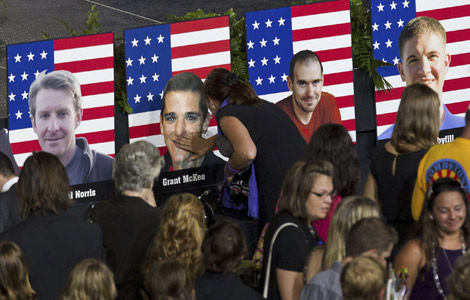
 Thousands pay final tribute to US firemen
Thousands pay final tribute to US firemen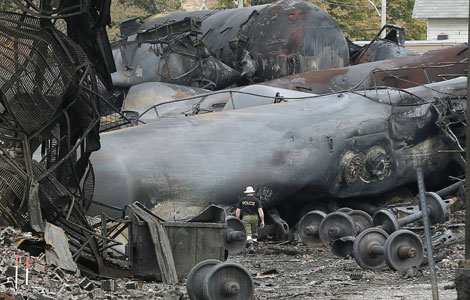
 Dozens feared dead in Quebec derailment
Dozens feared dead in Quebec derailment
 Breathe deep, this is the real thing
Breathe deep, this is the real thing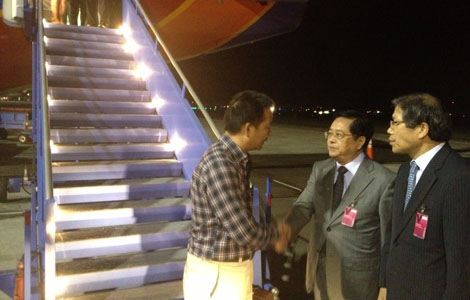
 Families of crash victims in SF
Families of crash victims in SF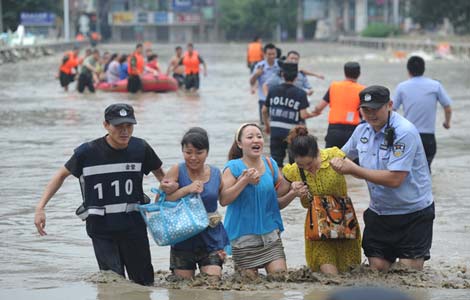
 Rainstorms cause severe flooding and landslides
Rainstorms cause severe flooding and landslides
 Coal burning in China's north can shorten lives
Coal burning in China's north can shorten lives
 Some solar companies see brighter first half
Some solar companies see brighter first half
 Thousands flock to Texas Capitol over abortion
Thousands flock to Texas Capitol over abortion
Most Viewed
Editor's Picks
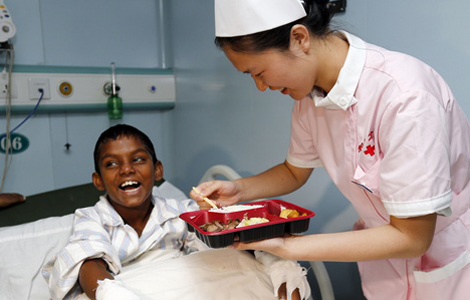
|

|

|

|

|
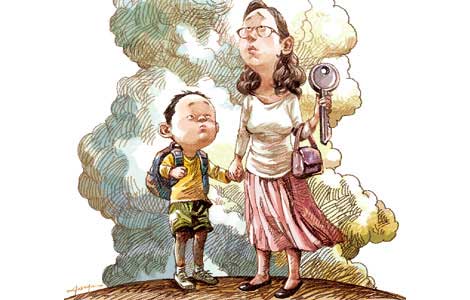
|
Today's Top News
Brazil denies Snowden asylum
Pilots in air crash relied on automatic equipment
Chinese companies could face US delisting
High-level China-US talks to kick off
Watchdog: Trans-fat levels meet standards
IMF cuts China's, world's growth
Most passengers on crashed plane reported safe
Shenzhen Red Cross denies organ claim
US Weekly

|

|








